Advantech Wireless Technologies
A Baylin Technologies Company
This has been a busy year for Advantech Wireless Technologies.
In January of 2018, Baylin Technologies (“Baylin”) acquired the Advantech name, logo, and brand along with the RF product lines comprised of Solid-State Power Amplifiers, Frequency Converters, SNG Antennas and Terrestrial Microwave products.
Additionally, in July 2018 Baylin purchased Alga Microwave & MitecVSAT bringing increased engineering and manufacturing capabilities that includes a complete line of microwave passive components.
__________________________________________
Melding two competing companies into one
consolidated team is a complex mission —
and it’s extremely satisfying when
the parts come together.
In 2019 Baylin officially announced the grand opening of Advantech Wireless Technologies’ (“Advantech”) Center of Excellence, located in Kirkland, Quebec. The 66,000 sq. ft. facility currently houses the operations of Advantech, Alga and MitecVSAT.
Together, these teams have embarked on one of the most ambitious R&D road maps in the industry. Combining the three entities into one symbiotic operation has enhanced processes, design philosophies and market strategy.
Baylin made significant investments in the facility, creating one of the best state-of-the-art manufacturing facilities in the SATCOM industry.
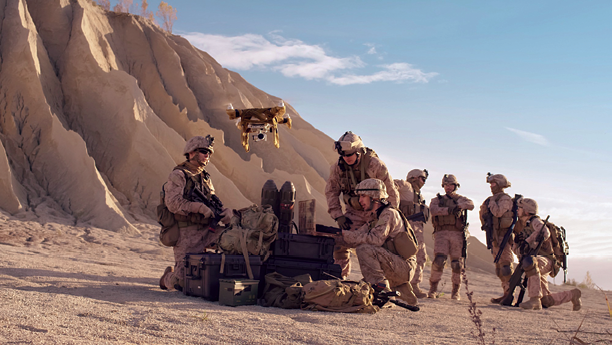
The new location includes a machine shop with a dozen CNC machines, enhanced quality systems, advanced ESD protection, CO2 distribution, a new data center, anti-static flooring, power, LED lighting, ventilation, 15,000 square feet of new office space and superior working conditions, which have optimized the operational efficiency.
The bulk of Advantech’s business is comprised of Solid State Power Amplifiers, however they also design and produce a line of Frequency Converters, Terrestrial Microwave Radios and Pulsed Amplifiers. The main differentiator for Advantech is the portfolio of SSPAs that range from 8 watts to more than 10,000 watts in S-, C-, X- and Ku-band frequencies.
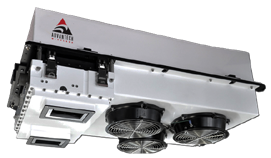
Ku-Band-300W-400W-500W BUC SSPB SSPA GaN.
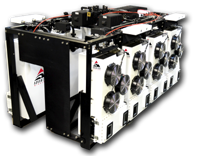
3kW Ku-band GaN.
Advantech is one of a small number of companies experienced in the provision of high-power, soft-fail SSPA systems which are featured in the ‘Summit’ product line.
Thousands of watts of RF power can be pushed, thanks to Advantech’s proprietary, high efficiency combining structures.

Current R&D initiatives also include high-power Ka-band, Q- and V-band amplifiers for LEO and MEO applications, pulsed amplifiers for RADAR and Troposcatter amplifiers and LNBs.
The Advantech design team is hard at work on ‘hybrid’ initiatives to combine the best elements of multiple products and increase performance and manufacturability.
Collaboration is both important and powerful when it comes to meeting the goals that have been set for the brand. Melding two competing companies into one consolidated team is a complex mission — and it’s extremely satisfying when the parts come together.

The multiple perspectives and leading industry expertise have the team excited for 2020 and the years ahead.
Tony Radford has amassed a 30 year career in the satellite communications industry and has worked in a variety of roles including engineering, sales and sales management at such companies as Scientific Atlanta, VertexRSI, STM Wireless, Paradise Datacom and Teledyne Technologies. Incidentally, Tony co-founded Telecom International, a SATCOM systems integration company that was ultimately purchased by STM.
AvL Technologies
Founded in 1994, AvL Technologies reached a huge milestone this year: 25 years of connecting the world with mobile satellite communications!
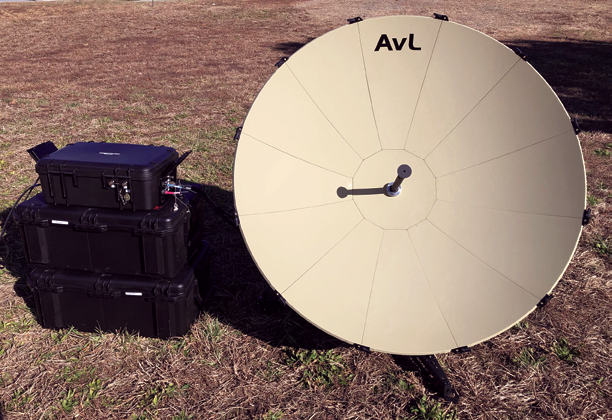 AvL Technologies’ 1.35 meter manual ARSTRAT antenna.
AvL Technologies’ 1.35 meter manual ARSTRAT antenna.
From the company’s humble beginnings — founded in Jim Oliver’s garage as he tinkered together a custom solution at the request of BAF Communications — AvL Technologies has grown into a global mobile SATCOM industry leader.
What started as Jim’s passion for solving problems and helping a former customer grew into a business, which then grew into a new passion for creating jobs in Jim’s beloved adopted community of Asheville, North Carolina.
In 25 years, the company has outgrown several small industrial spaces to occupy two custom buildings with 100,000+ square feet of product development, manufacturing and testing space — and created an AvL Technology Park in the process.
__________________________________________
From the outset, AvL has been
an engineering-led company.
What this means is that AvL products
are engineered and
re-engineered to the point of
ultimate performance.
The company’s 300 skilled employees continually innovate and create new products, and find new ways to work with customers to solve challenging communications problems. The company has shipped more than 30,000 antennas, most of which are still in operation today.
If you were to ask Mr. Oliver about these achievements, he would tell you that 25 years passed in the blink of an eye and the company is on a trajectory to continue growing, innovating and creating lasting jobs in Asheville.
The 25 Years milestone was celebrated during the entire year. The company’s Sales and Marketing teams enjoyed hosting in-booth events at trade shows and made sure to reconnect with customers, business partners, vendors and competitors at every opportunity.
Company celebrations were held for employees and their families, with yet a few celebrations planned before the end of the year (as well as a surprise for Mr. Oliver).
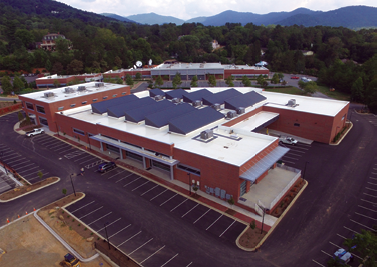
The AvL Technology Park.
Though AvL shipped 1,200+ antennas this year, the company’s passion for product development did not slow. In 2019, the company embarked on several new products, many product improvements, new low-PIM and cyber security capabilities, and several ARSTRAT certification efforts.
AvL’s product developments for U.S. Department of Defense (DoD) applications were numerous. The company continued its development of a Ka-band electronically steered array antenna (ESA), which is on track with respect to AvL’s SBIR contract with the U.S. Air Force.
AvL incorporated enhanced cyber security protocols into the AAQ Antenna Control System this year for a specific military program, and the capability will be available by request to other customers soon. The company also integrated protected SATCOM modems as requested for key customers.
A next generation 1.2 meter, tri-band, flyaway tripod antenna, Model 1235-T, currently undergoing Inmarsat GX and ARSTRAT certification, was a priority.
AvL’s engineering team built upon years of experience with 1.2 meter reflectors (the company’s most popular aperture size) to design a robust, ultra-accurate and ultra-lightweight reflector for ARSTRAT operations.
The tri-band antenna is a modernized version of our Model 1035 terminal including an AAQ Antenna Control System, new packaging, an upgraded tripod and wideband Ka-band capability for operation with commercial Inmarsat GX and WGS.
AvL’s new 85 cm. Model 824i and 1.2 meter Model 1224i flyaway antennas with two-case pack-ups have integral bonded cellular capability. The compact and functional designs enable either terminal to be set-up and operational in minutes by one person.
This is one of the many reasons these terminals have been selected for the FirstNet program and have been widely adopted for homeland security, law enforcement and public safety applications.
As part of the General Dynamics Mission Systems GBS solution, PathFinder Digital selected AvL to provide the 85 cm. Ka-/Ku-band flyaway antenna as part of the BAT-GBS-85 Terminal.
This robust terminal packs into two airline checkable transit cases and operates with GBS one-way wideband transmissions to support the timely delivery of classified and unclassified data and video products for mission support and theater information transfer.
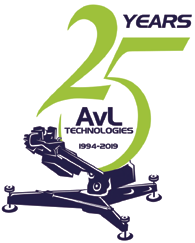
The terminal completed MIL-STD-810G environmental testing and late in the year received ARSTRAT certification.
Several new configurations of AvL’s Family of Integrated Terminals were developed in 2019. A lightweight weight version of the 1.35 meter tri-band terminal was selected for ARSTRAT certification to support the ISR Stingray program by Sigma Defense. Now in Phase 3, the 1.35 meter terminal is expected to be certified by year-end.
Two of AvL’s larger trailer-mount antennas, sized at 2.5 and 3.8 meters, received design upgrades to operate with multi-carrier low-PIM X-band operation and EMI/EMC hardening. The 2.5 meter antenna also completed Ku-band certification testing by the GVF.
AvL was selected for important refurbishment and modernization programs in 2019. In doing so, the company is enabling the warfighter to use modernized equipment at a significantly lower cost than for new equipment.
Modernization efforts include adding the AAQ Antenna Control System, new RF equipment and the latest technology modems.
From the outset, AvL has been an engineering-led company. What this means is that AvL products are engineered and re-engineered to the point of ultimate performance. And sometimes re-engineering comes in the forms of improving parts of the antenna that are often overlooked but have a significant impact on performance.
One of those parts is the latches that hold together AvL’s segmented reflectors. Latches are critical parts as they can contribute to the stiffness of a reflector or cause it to sway. They can impede reflector pack-up, cause damage to other reflector segments while packed, or nestle so as to hold reflector segments safely within a case.
During 2019, AvL’s engineering team relentlessly pursued improvements to several types of latches and made monumental breakthroughs. Though difficult to describe, the improvements have made AvL’s reflectors even higher performing, if that’s possible.

To see proof in action, stop by AvL’s booth at the upcoming SATELLITE 2020 show and ask one of our engineers to show you just how cool latches can be.
www.avltechnologies.com
Krystal Dredge is the director of marketing for AvL Technologies. Krystal has 15+ years of product marketing experience in satellite and wireless communication, and worked at Honeywell and EMS Defense & Space Systems prior to joining AvL in 2012. She holds a BSJ degree in Journalism from the University of Kansas and an MBA from Wichita State University.
Centauri
2019 was a formative year — in the literal sense — for Centauri. In April, Centauri was created by bringing together three leading companies in the national security sector: Integrity Applications Incorporated, Xebec Global and Dependable Global Solutions.
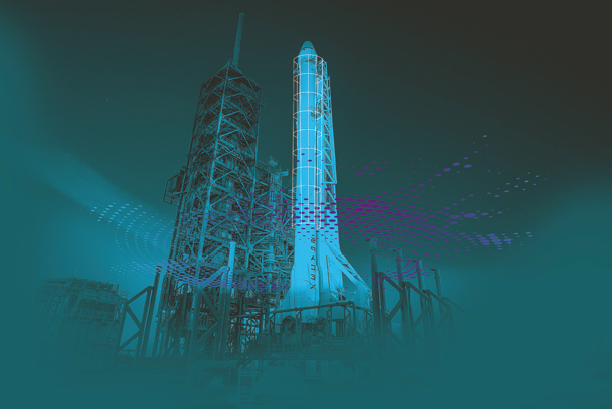
Unique in the industry, Centauri is an elite prime contractor in the national security marketplace with extensive new capabilities that enable it to deliver innovative solutions for the most demanding mission needs within the Intelligence Community and Department of Defense (DoD).
The selection of the new name was purpose-driven: Centauri is the closest star system to Earth, made up of the brightest stars in the southern sky. And like the constellation, Centauri is made up of the brightest minds dedicated to solving the toughest challenges facing our customers’ missions.
Centauri space solutions keep our nation ahead of adversaries Space solutions are a key component of Centauri’s capabilities. Centauri’s team of dedicated, mission-focused experts keep our nation at the forefront of space-based sensor technology development — and always ahead of our adversaries.
Because defending the nation requires accurate and timely information, our research and development initiatives are designing the next generation of defensive technologies to ensure that every threat is detected, analyzed and mitigated.
Centauri has extensive experience in all aspects of surveillance technologies required to identify threats against in both volumes of air/space, as well as identifying threats directed towards specific assets of interest.
__________________________________________
In addition to the threat of unintentional
collisions, adversaries are advancing technologies
with the intention of one day performing nefarious
actions to the nation’s assets in space.
Centauri sensor expertise in active (radar) and passive sensors as well as network command and control for timely and accurate threat identification. Specific Centauri expertise includes:
System engineering expertise, approaches and processes to distill the most complex customer needs into system requirements needed to ensure successful development and delivery of detection/situational awareness systems. Extensive experience and modeling and simulation tools that provide the ability to accurately assess key surveillance performance parameters including individual and integrated system/ network of sensors coverage and minimum detectable threat determination in various operating conditions.
System architecture, design, fielding and testing of advanced sensor technologies for automated threat detection. Experience includes integration and deployment of COTS, GOTS and custom sensors as well as the development of software solutions that enable persistent operations in deleterious conditions including contested environments, poor signal to noise scenarios, very dim targets, and highly cluttered environments. Extensive experience detection, custody maintenance (persistent tracking of potential detected threats), accurate characterization (high confidence in determination if an object id a threat or not), and cueing of counter-surveillance systems to abate detected threats. Extensive software design, prototyping and development in support of situational awareness command and control. Including automated and advanced planning, tasking and scheduling algorithms and software. Related areas of expertise include support of internal software organization and communications approaches such as microservices, service-oriented architecture as well as communications external system communications protocols.
Custom design and implementation of graphical user interfaces (GUIs) to provide optimum situation awareness for systems with “humans in the loop” requiring “decision support, or fully automated systems that simply need to alert those in times of threat identification. Machine Learning techniques that improve detection and false detection rejection in sensor systems where traditional object detection approaches may be insufficient and require automated decision aid metrics to ensure 99.XXX detection accuracy requirements.
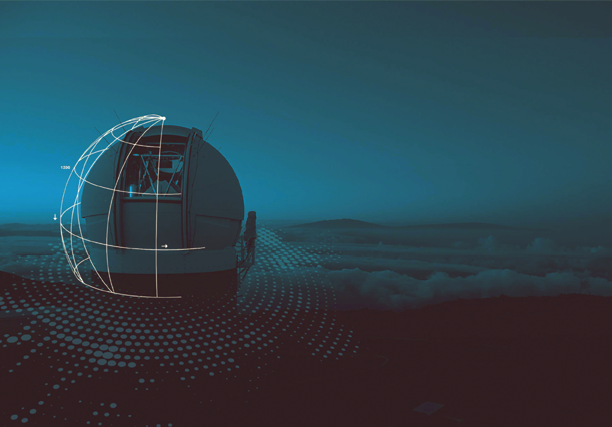
Kord Acquisition
In September, Centauri acquired Kord Technologies, Inc., an integrated defense and aerospace firm based in Huntsville, Alabama. The acquisition strengthened Centauri’s defense technology capabilities and allows the organization to provide a broader range of solutions to customers across the intelligence and defense communities.
Kord Technologies was founded in 2008 by Allen and Tom Young and quickly became one of the fastest-growing government contractors in the country. The company has an extensive portfolio of cyber, aerospace, defense technology, aviation operations and training and logistics capabilities to include expertise in directed energy and computational fluid dynamics.
Kord provides a wide range of integrated aerospace services for complex systems, to include the Space Launch System (SLS). They play a crucial role in the development of core transportation capabilities for NASA’s journey to Mars and have extensive experience in rocket design, test, and development. Their capabilities include propulsion; computational fluid dynamics; vibro- acoustics; manufacturing, production and testing; mechanical design; and thermal, stress, fracture modeling and analysis.
Renewed Focus on Space Situational Awareness
As more and more satellites and commensurate debris proliferates the space around our planet, the need to keep track of these objects and their orbits is vital to preventing damage or even loss of life due to unintended collisions.
This field of endeavor is often referred to as Space Situational Awareness (SSA). SSA includes the functions of artificial object detection, tracking, orbit determinations, and characterizing in all Earth orbit regimes.
These orbit regimes range from relatively close LEO that range from 100 to 1,200 miles above the Earth to Geosynchronous Earth Orbits (GEO) which go out as far approximately 22,000 miles from Earth.

The primary SSA mission of determining the position of objects is referred to as “catalog maintenance.” In addition to the threat of unintentional collisions, adversaries are advancing technologies with the intention of one day performing nefarious actions to the nation’s assets in space.
These assets provide many basic foundations of everyday life including weather forecasting, global positioning system (GPS), communications, and even providing our television signals.
Maintaining timely SSA is critical for the nation to detect and abate nefarious actions by our adversaries.

